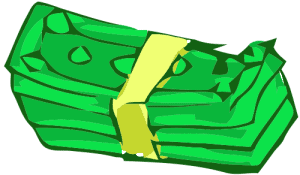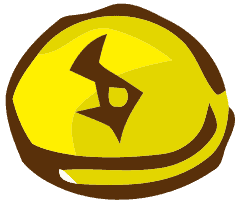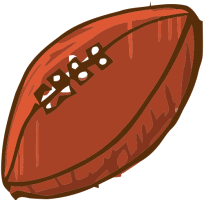Student athletes worldwide undoubtedly put heart and soul into their sport of choice, but even though their possible payment is a source of vibrant debate in the United States, it appears that the University of Saskatchewan’s current set-up is fine the way it is.
The National Collegiate Athletic Association was under fire earlier this year in the report “The Case for Paying College Athletes” by economists Allen R. Sanderson and John J. Siegfried, both from the United States. In short, they suggest that in a context where student athletes are considered athletes first and students second, it is unethical and possibly illegal for the NCAA not to pay them.
Subsequently, the NCAA has been subject to a litany of lawsuits concerning players’ rights and whether or not they should be paid. As recently as August 2015, the National Labor Relations Board turned down the request to grant football players at Northwestern University in Illinois the right to unionize, a change that would have ostensibly been a step down the road towards demanding pay.
For its part, the NCAA has vehemently spoken out against unionization and paying of players, claiming in a press release that any “union-backed attempt to turn student-athletes into employees undermines the purpose of college: an education. Student-athletes are not employees, and their participation in college sports is voluntary.”
With all this information and debate in mind, a look into how student athletes are taken care of at the U of S was necessary. What started out as an examination and debate on the pros and cons of hypothetically paying student athletes quickly turned into a successful persuasion in support of the current system in place at the U of S.
There’s little doubt that being an athlete is a demanding pursuit to begin with, so adding university courses and employment on top of it can be almost too much to handle.
Dalyce Emmerson, a fifth-year kinesiology student who plays on the Huskies women’s basketball team, estimates that athletics can take up about 20 hours of her time per  week in midseason.
week in midseason.
Similarly, John Trumpy of the Huskies football team estimates his midseason time commitment as being 25–30 hours per week, with the off season still demanding approximately 12 hours.
Both acknowledged the conflicts they come across while trying to balance classes and athletics.
“Yes, they conflict. I often miss Thursday afternoon and Friday classes. Sometimes the only times we can get into physio is during class time so that would conflict too,” Emmerson said.
Trumpy agreed that the two can prove difficult to balance.
“Our schedule is pret ty consistent so we can usually plan our classes around practice. However leaving town every other weekend results in missed classes regardless,” Trumpy said.
ty consistent so we can usually plan our classes around practice. However leaving town every other weekend results in missed classes regardless,” Trumpy said.
The idea that the time commitment of a recreational activity can veer so close to that of a part time — or even full time — job is a staggering reminder that being a student athlete is no easy task.
In this sense, it wouldn’t seem at all out of line if these athletes expected a reward or re-imbursement for their time and commitment. As I quickly learned, however, when it comes to Huskie student athletes, the reward is already there — it just takes many different forms.
In email interviews with the Sheaf, when asked to consider the possibility of being paid for their contributions to Huskie Athletics, both Emmerson and Trumpy seemed to feel that monetary payment would be unnecessary.
“Receiving payments in addition to an athletic scholarship has never really crossed my mind. I don’t feel that Canadian Interuniversity Sport generates enough revenue to justify additional monetary transfers to the students. In addition, I think that it would take away from the purity of the game that university students play at and take away from the overall focus of the sport,” Trumpy said.
Emmerson seemed to agree.
“I don’t think that students should come out earning money. I think that if we could break even and have tuition, books and rent paid for, but not actually get a pay cheque every month [it would be sufficient],” Emmerson said.
To learn exactly how these scholarships work and are delegated, I spoke with Basil Hughton, the athletic director for Huskie Athletics.
According to the rules of CIS, the governing body to which Huskie Athletics is accountable, student athletes at the U of S are provided plenty of opportunities to be financially rewarded or re-imbursed as a result of their involvement in sports. This is done through the delegation of scholarships and athletic financial awards.

This scholarship money comes from a number of different sources, including U of S funds, third party donors and organizations like Sask Sport. As Hughton puts it, scholarships are restricted in value but still generous.
“The bottom line in CIS sport is that a student athlete can receive a scholarship up to their tuition and compulsory fees, no more than that,” Hughton said.
Then it gets more complicated.
“There are also scholarship caps that limit the amount of scholarship that can go to a specific team, up to 70 per cent of the CIS roster,” Hughton said. “So if a basketball roster is 14, then 70 per cent of 14 — which comes in around nine — can get scholarships. All 14 can get some scholarship, but the total of full scholarships can’t go over whatever 70 per cent of 14 is.”
Of course, the team’s ability to provide scholarships for all players is also contingent on how much scholarship money each team has at its disposal.
Hughton also emphasized that the terms and conditions of these scholarships still require student athletes to excel in their studies.
“In order to be paid a scholarship in your first year, you have to have over an 80 [percent] entrance average and to be paid a scholarship in subsequent years, you have to be  over a 65 [per cent]. If you’re below that, you’re not eligible,” Hughton said.
over a 65 [per cent]. If you’re below that, you’re not eligible,” Hughton said.
Additionally, Hughton noted that there’s an added benefit for those student athletes who are able to maintain their high grades.
“Any athlete who achieves 80 or above does not count towards a cap. So if a team had six athletes out of 14 who achieved 80 or above, then basically their whole team could be on scholarship as I described it, provided that team had the funds available to them in financial award dollars to allocate,” Hughton said.
Emmerson feels that these scholarships properly reward student athletes for their commitment and makes it clear to most of them that their classes shouldn’t go neglected.
“I think because we need to attain a certain average to get our scholarships it gives us motivation to work hard in school. That being said, there are athletes that just come to school because they want to play basketball so they don’t try very hard,” Emmerson said.
Trumpy agreed that scholarships are sufficient rewards for student athletes.
“I believe that college sport helps to harness school [and] city pride, helps pay [or] justify for better athletic facilities that the entire city gets to enjoy and produces character people. A scholarship in return seems pretty fair to me,” Trumpy said.
Certainly, student athletes aren’t the only ones on campus dedicating extensive hours to extracurriculars without financial compensation.
Fifth-year drama student Kody Manson seems to think that not paying student athletes is for the better. While not involved in Huskie Athletics, Manson, who tried out for men’s volleyball in his first year, is certainly familiar with extracurricular time commitments: for student actors, the Greystone Theatre productions put on by drama students are also a considerable unpaid time commitment.
are also a considerable unpaid time commitment.
“Once you start getting into full runs of the show, people are generally there for about four hours, between 6 to 10, six nights a week if you’re an actor,” Manson said.
Concerning the issue of paying student athletes, Manson recognizes the severity of their commitment but feels that salary payment in addition to scholarships would be unwise.
“I think it ramps up the risk and the stress. If money’s not already in the mix and you start to throw money at it, it adds up the stress,” Manson said.
 However, Manson isn’t against all forms of payment.
However, Manson isn’t against all forms of payment.
“I think it would be cool if there were performance bonuses for athletes. Maybe a rookie player comes in one year and he’s expected to do okay, but he just blows everyone’s minds and excels in his sport,” Manson said.
When asked about the possibility of paying student athletes for their commitment to Huskie Athletics, all parties also noted that the financial climate around Huskies sports would also make payment difficult, if not unfeasible.
“We’re nowhere near the atmosphere, scholarship-wise, as you hear and read about in the NCAA or those kinds of things,” Hughton said.
Likewise, Trumpy notes that CIS can’t exactly compete with the NCAA.
“Canada is in a much different situation than our counterparts down south. I might have a different feeling if I was thousands of dollars in debt after four years of playing university football and knowing that my team brought in millions of dollars in revenue. However, as it is, I think we’ll do just fine,” Trumpy said.
Manson agreed that money could pose an issue.
“Our organizations here in Canada aren’t making fistfuls of money overtop of the players and the athletes who are performing every day,” Manson said.
All this is to say that student athletes at the U of S likely won’t be getting paid anytime soon, but maybe that’s not such a bad thing. If I’ve learned anything, it’s that student athletes give a lot to their sport of choice but still get lots in return, even if pay isn’t part of the conversation.
The rewards involved in athletics are evidently much more than monetary. Despite their heavy commitments, students are still held to academic standards and there’s still a little money in it, so everyone’s doing okay.
“I would say that in lots of ways, our athletes are not paid but there are rewards that go with being an athlete,” Hughton said. “The expectations that we have for our student athletes are extremely high and I think given the term ‘student athlete,’ which we use all the time, indicates that they’re students first and athletes second; and if they can come to university, get a degree in the college of their choice or the field of choice, and at the same time play in the sport they love and their sport of choice, then that’s a tremendous experience overall.”
—
Images: Jeremy Britz/Graphics Editor